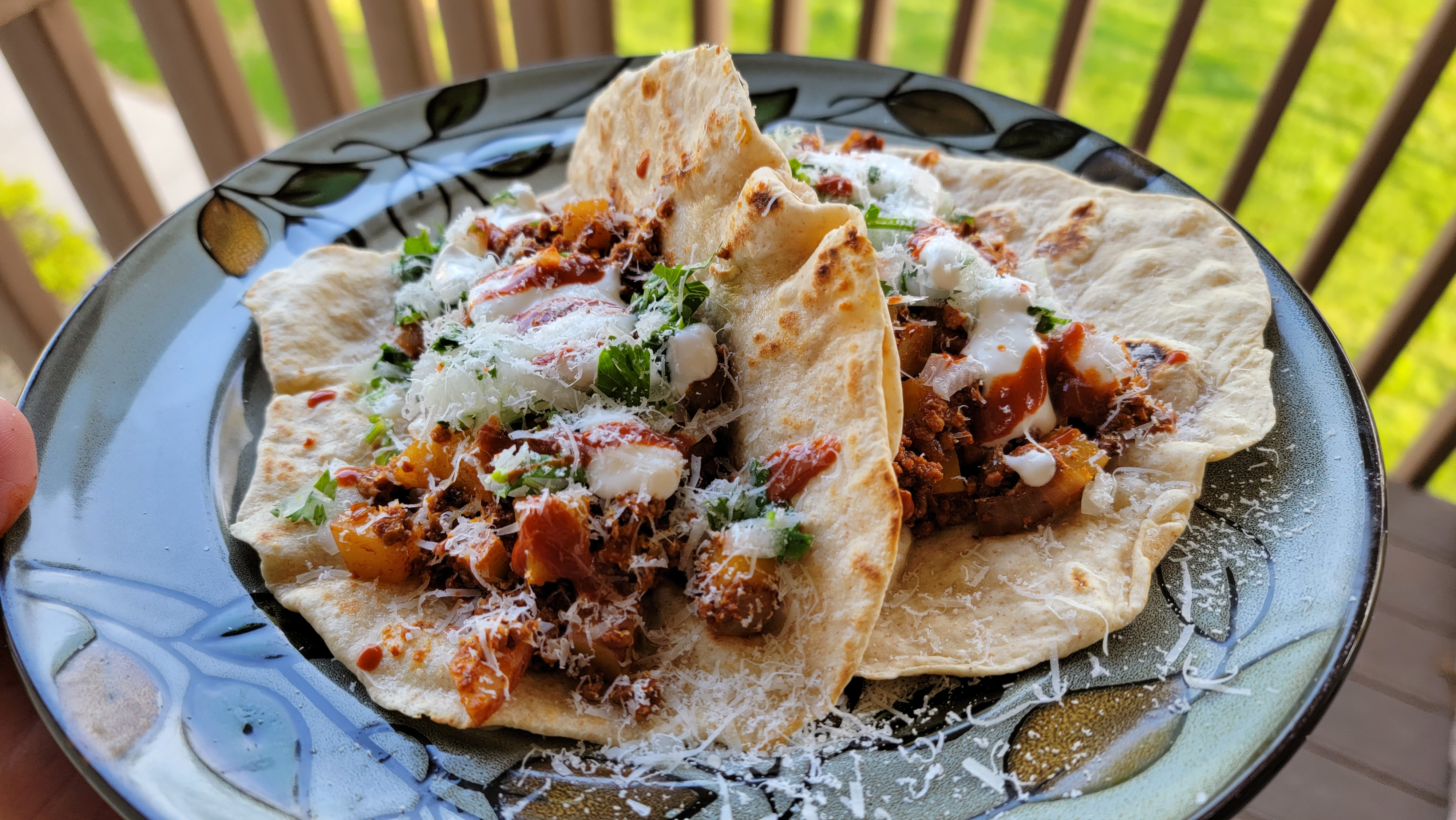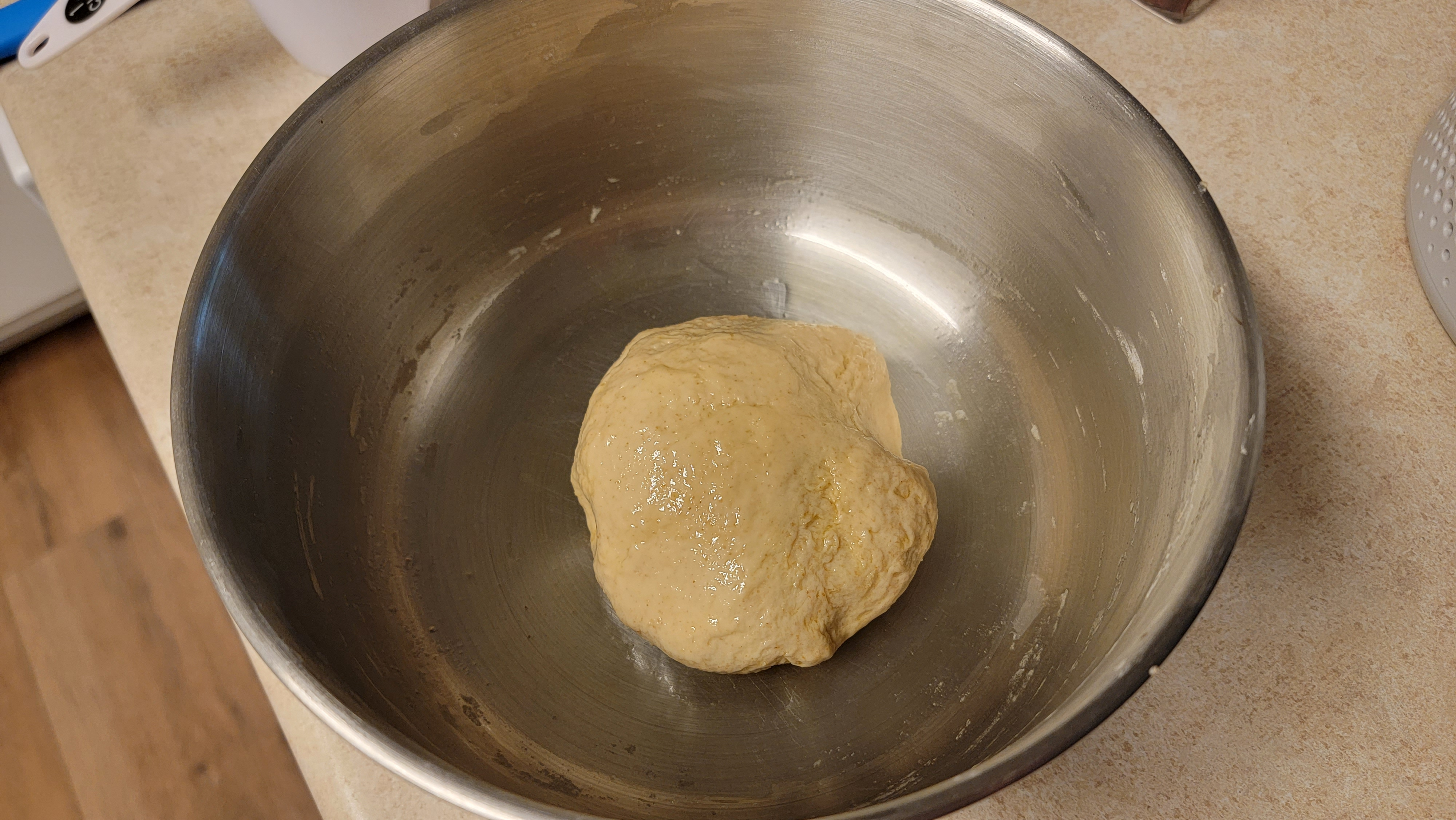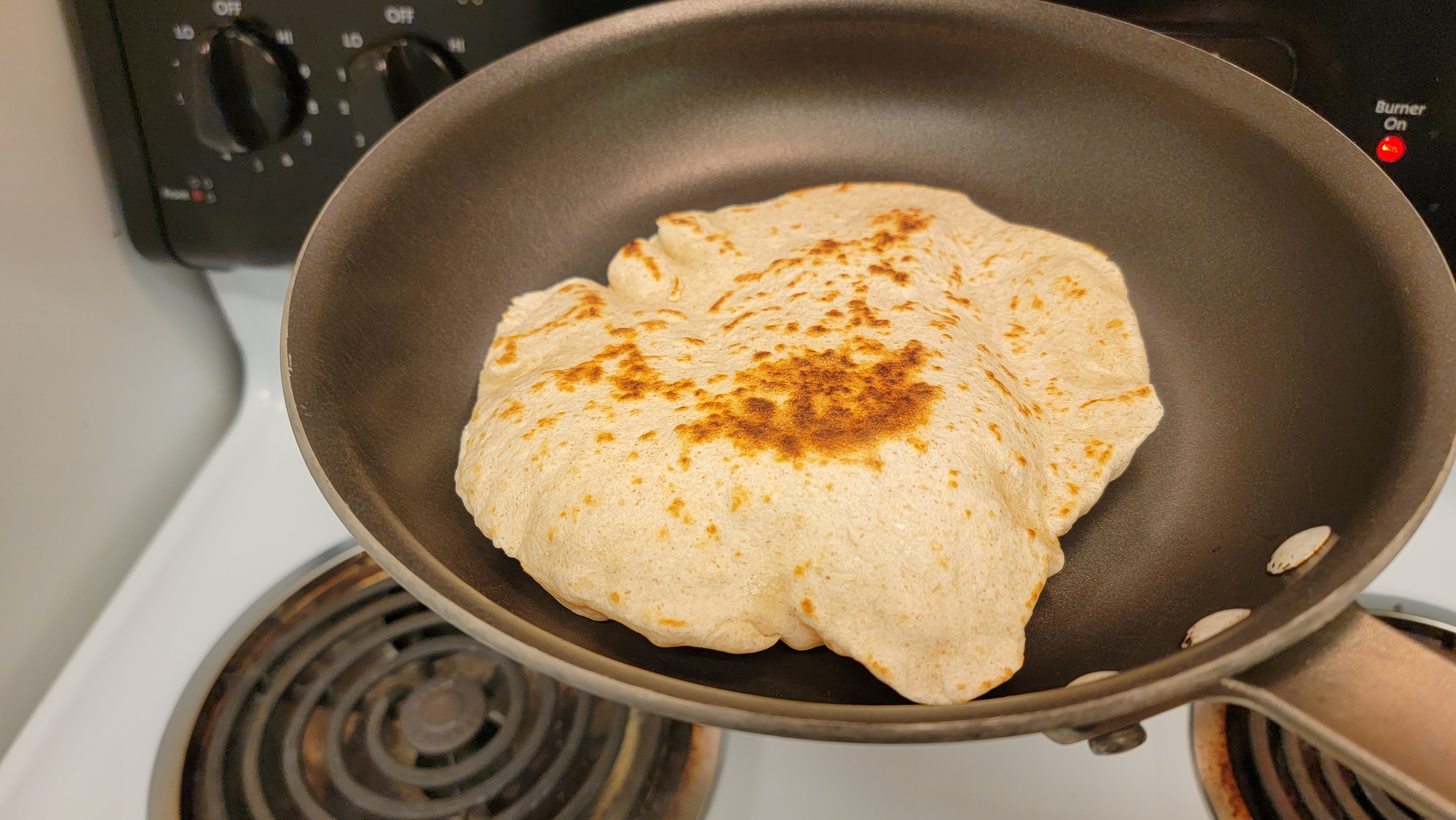This Is The Best Tortilla You've Never Heard Of
Yeasty and soft, pan árabe is the best option for beginner tortilla-makers at home.
We may receive a commission on purchases made from links.
No cuisine is a monolith. Even with closely guarded styles such as the French or Italian schools, if you trace the history of a dish from its roots to its flowering, you're bound to find some interesting cross-pollination along the way. Maybe this is why I have such a love for Mexican food. Its ingredients are so versatile, so adaptable, and the enthusiasm for bright colors and flavors makes for an intricate culinary culture that wears its heart on its sleeve. Such is the case with pan árabe, one of the finest tortillas you'll ever stuff in your mouth.
I first learned about this incredible flatbread while perusing Rick Martinez's Mi Cocina (Yes, I'm still stumping for this amazing cookbook). According to the author's notes, pan árabe originated in the Pueblo region of Mexico, thanks to an influx of Iraqi immigrants in the 1920s (other sources cite Lebanese influence as well). Between their love of spiced, spit-roasted meats and their skill at yeasting and rolling delicious dough, a new pita-like hybrid was formed: The outstanding marinated-pork madness known as tacos árabes.
But as wonderful as this filling might be, today we're focusing on the flatbread itself. If you're a fan of gyros or items like Taco Bell's Cheesy Gordita Crunch (which ackchyually isn't a real gordita), you're already familiar with at least a similar style of tortilla—soft, pillowy, and just the slightest bit chewy.
Pan árabe might as well be known as Pueblan pita bread; even the folks at Serious Eats recommend using store-bought "pita rounds" in their version of tacos árabes. But what fun is that, especially when the homemade version is so deliciously simple?

Pan árabe is arguably the easiest tortilla to make at home
Are you one of the millions who discovered "No Knead Bread" during quarantine? Then you can make pan árabe. Martinez's recipe features the same ingredients that periodically take the internet by storm: yeast, flour, salt, water, and olive oil. I'm not going to share the exact measurements here (seriously, buy the book for yourself), but let's just say they're fairly in line with your average focaccia or homemade pizza crust. And because the fat in this recipe is liquid, you don't need to worry about cutting butter or lard into the dough, as you would for most other flour-based tortillas.
Now, the recipe does technically call for the use of a stand mixer, applying a dough hook for "about ten minutes" to create a smooth, pliable mixture. I don't own a stand mixer, so I generally just work the dough by hand until it just comes together as shown in the photos (generally between four and five minutes). How can I get away with such a deviation? Because the real secret ingredient, as indicated in the recipe's notes, is time.
After a quick room-temperature rise in an oiled and covered bowl (until the dough bal doubles in size), Martinez recommends deflating the dough and tucking it in the refrigerator "for at least 24 hours to develop more depth of flavor and a subtle tang, but if you have the time, take it longer – after 36 hours the dough will develop a sourdough-like texture and flavor."

This is where the connection to no-knead bread comes in. Resting the mixture in this fashion allows the gluten strands to form on their own, removing the need for a full-on, well, kneading. And let me tell you, as soon as you lift the cover on that third day, you're going to be rewarded with a positively intoxicating smell.

From here, the procedure is more or less Flatbreads 101: Divide the dough into balls, roll them out one by one to about 1/8" (while keeping the rest of the divided balls covered to prevent moisture loss), and toss them onto a hot surface or pan until bubbles and gold spots begin to develop. Flip once, then perhaps again, and wrap the finished tortillas in a clean dishtowel until you've made your way through the batch.
Don't worry if your dough balls don't roll out exactly round. Mine frequently take on the shape of Wisconsin, or the silhouette of Jon Arbuckle's head. Just get them as even as possible, and once they hit the pan they'll form themselves into something edible. Secondly, it's okay if you over-toast or blacken a few of the tortillas. Depending on the filling (and how long they steam with their fellows in the dishtowel), these charred bits carry flavor virtues all their own. Which leads me to my next point...

Pan árabe encourages experimentation
After more than a dozen batches of pan árabe, there are a few touches I'd recommend. First, I like to sub in a couple tablespoons of whole wheat flour in addition to the prescribed all-purpose flour. You want to avoid adding too much, as it can throw off the mixture's moisture content, consistency, and flavor. I'm sure this isn't exactly traditional, but by swapping in just a tablespoon or two, you'll be in for an even more fragrant and complex experience.
Next, we come to the cooking medium. Martinez and others recommend the use of a heated comal or cast iron skillet to toast up the flatbreads. Now, I'm going to assume that either his stove and pans are better than mine, or that his kitchen has superior ventilation, because I've tried multiple cast iron skillets on two different stoves with some pretty mixed results. For the easiest version of pan árabe, just go ahead and use a nonstick pan.

Say you don't have a full three days to wait on delicious tortillas. No problem. Though Mi Cocina leans toward the full fermentation time, Martinez's recipe states that the dough can be enjoyed after as little as a twelve-hour rest in the fridge.
Pan árabe provides more than just an interesting look at the tangles of culinary history; it's also perhaps the perfect entry point into making your own tortillas at home. If you're a baker of even the most modest ability, you likely have the necessary ingredients lying around. And there's no specialty equipment really required, such as a stand mixer or tortilla press. Bowls, measuring cups, a skillet, and a rolling pin are all you need to expand your taco horizons and make some of the best flatbreads you'll ever taste.


